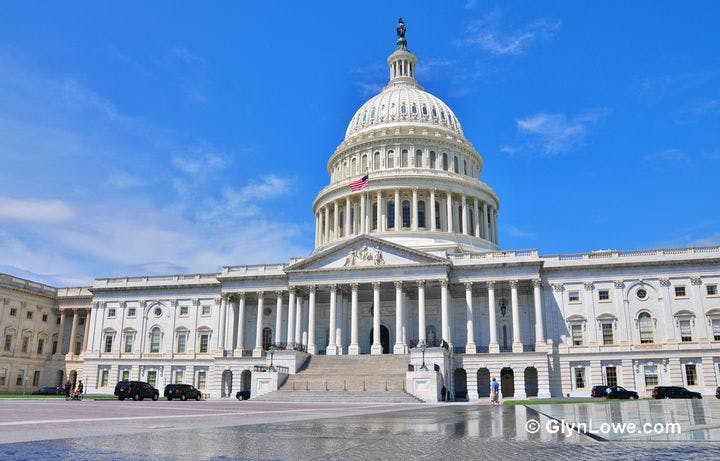Spring 2010
Hail, Divided Government
– The Wilson Quarterly
America has two completely different modes of government: One party controls both Congress and the presidency, or each party controls one branch. Which mode is more effective?
What could be harder for a president than dealing with a Congress controlled by the opposition party? Try governing with your own party in power, writes National Journal columnist Jonathan Rauch.
America today has two completely different government settings: Mode 1 (one party controls both Congress and the presidency) and Mode 2 (split control). Mode 2 works better, Rauch contends.
The underlying dynamic is that today’s Republican and Democratic parties have effectively no ideological overlap. When one party controls both branches of government, its policies alienate moderate voters. The minority party (Republicans for the time being) has every incentive to do what it can to help the majority fail at governing; it will reap the benefits come election time. Without any minority support, the majority must move to its own ideological center rather than the electorate’s, in an effort to secure every possible vote from within.
In such a situation, the president must try “to hold together a governing coalition by slaloming: veering from left or right to center and back.” This is what President Barack Obama has been trying to do for more than a year. “Every zig toward the center offends the party’s base (too many compromises!), and every zag back toward the base upsets the centrists (he’s just too extreme!), and the president looks weak and inconsistent,” Rauch writes.
Mode 2 works in reverse. When the parties share power, they are forced to compromise, bringing legislation closer to the country’s ideological center in the process. The president can position himself as the central mediator between the party ruling Congress and his own base. Governing will be easier for the president, and his popularity will improve.
Rauch says that recent history bears this out. In periods of unified government (Bill Clinton’s first two years and George W. Bush’s middle four), “Congress leaned too far left or right, the president was dragged off center, the country became bitterly polarized, independents grew disgusted, and the voters soon switched to Mode 2,” Rauch writes. That may be just what happens in the upcoming midterm elections in November. Unlikely as it may seem, if Congress flips Republican, President Obama may stand to benefit.
* * *
The Source: "The Curse of One-Party Government" by Jonathan Rauch, in National Journal, February 6, 2010.
Photo courtesy of Flickr/GlynLowe
